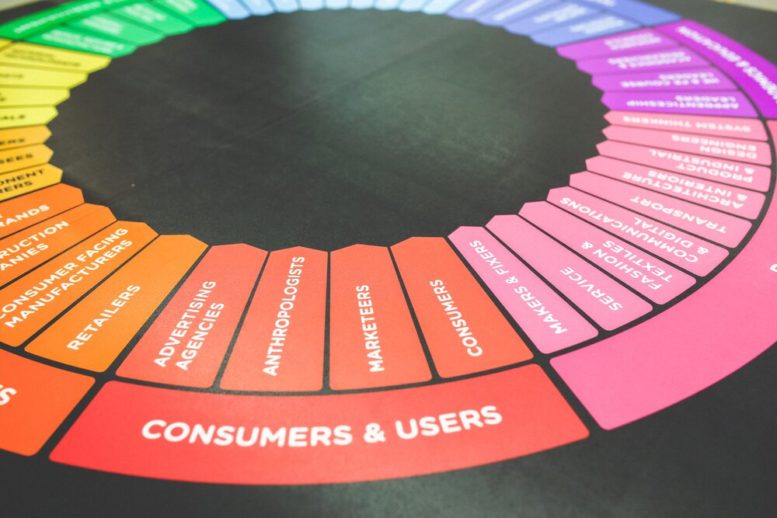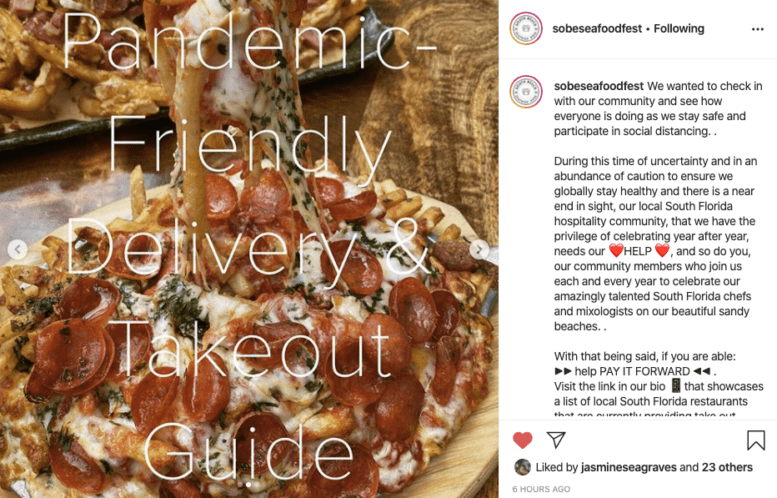By David Berry, Founder, DB + Partners: With the exception of Jared Leto, the world community has faced COVID-19 head-on in recent weeks, especially so in the past several days. Each industry faces its own share of challenges. And despite humanity’s knack for pessimism (at least on the Internet), it’s been a breath of fresh air to see many brands and humans step-up in meaningful ways.
Facebook has earmarked $100 million in grants for small businesses. Chef José Andrés announced he’ll transform eight of his restaurants into community kitchens for those struggling during the virus’ outbreak. Even Uber, notorious for questionable relationships with its independent contractors, has committed to 14 days of sick pay for its drivers.
And yet, other sober realities remain. According to the JPMorgan Chase Institute, the average company with fewer than 500 employees (in fact, 88 percent have fewer than 20 employees) has less than a month of cash reserves on hand.

The fallout of business not as usual has obvious, catastrophic implications for small businesses — many are clawing for survival.
All of which has put digital marketing at the center of conversation for those looking to stanch the bleeding and, hopefully, thrive against the odds.
The question is how. The expertise required to navigate the fallout of Coronavirus is in fact being written, and re-written, in real-time. To that end, we’ve compiled a list of ideas and tactics that at a minimum communicate competence to clients and customers, and at best, can carve a path to success in spite of obvious challenges.
1.Use Your Data. Many small businesses — restaurants specifically — have shown savvy in shifting service offerings quickly. From in-restaurant dining, they’ve pivoted quickly to delivery, even offering meal kits and packages of pre-made meals for reheating. But many are relying solely on the limitations of ‘free’ social media to share that message.
As a result, they’re at the whims of social algorithms that may or may not deliver that message to followers. Instead, there are three quick ways to use existing client information:
-
Email them: This is not an earth-shattering idea, nor is it intended to be. But there are two upsides to it — 1. Subscribers have already opted-in and shown an interest in your business and 2. You’ve got one of the closest things to a guaranteed message delivery that you can get. (Mailchimp has FREE packages you can use to do this).
-
Text them: Similar to the above, but this is viable if you have your customers’ cell phone numbers. And whereas email gets you close to guaranteed delivery, text messaging gets you almost to 100 percent. There are free services that exist to help you with this too, such as SlickText.
-
Build custom audiences for social ad campaigns: A ‘custom audience’ is a fancy way of saying that you can use your existing customer data — the information we just referenced above — to run highly targeted social media ad campaigns. Facebook/Instagram, LinkedIn, Twitter — all of the big players let you use this information to deliver ad campaigns to the exact users in your database. It’ll make your ‘Boost’ campaigns feel like amateur hour. Learn more here.

2. Audit Your Messaging — All Of It. Let’s face it, you’ve been putting off that re-write of your website for months anyway. Beyond that, this is perhaps the most crucial time to evaluate what you’re saying to your customers on all channels. That includes: Your website, your scheduled emails, your scheduled social media content, your Google My Business listing, your Yelp page, your collateral, your ad campaigns, your phone scripts — all of it. Evaluate language that was once useful but is perhaps now less applicable or, at worst, offensive in this environment. Then, take it a step further and craft new content and messaging that speaks to the unique concerns and challenges that are facing your customers.

3. Use Social Media. Different users have different content consumption patterns. We already know this. But in times of crisis, social media is often perceived (rightly or wrongly) as the space where messaging is most likely to be updated in real-time. Take advantage of the Pinned Post/Tweet feature on Facebook and Twitter to share pertinent information that will stay at the top of your social channels until you remove it. On Instagram, consider creating an Instagram highlight where users can look for important updates and messages directly from your brand.
4. Collaborate and Co-Promote. Sometimes, the best operating principles are rooted in the lessons we learned in childhood: “Do unto others as you’d have them do unto you.” In a business sense, that means exploring opportunities with non-competing businesses that can help to lift you both. Our client, CI Management, is a major food-based event producer in South Florida; they’ve felt an immediate impact on their business with the onset of COVID-19. But they haven’t stayed on the sidelines. Instead, they’ve stepped up to support the delivery businesses of its restaurant partners. It’s a good deed, and it benefits both parties.

CI Management, by way of its South Beach Seafood Festival, is supporting its restaurant partners.
5. Lead. Leadership and the applications of its principles are as nuanced as they are cliched. But it counts, now more than ever. The question, of course, is what true leadership looks like in times like these. Bold as we’d be to say we’re authorities on the matter, we feel that it’s worth looking at it from the perspective of what leadership is not. And that includes not getting in front of your customers and communicating to them often. Not being clear on how you are working to protect them. Not ensuring that your stakeholders, staff and/or employees are armed with the same unified message. And not preparing for how you’ll re-enter the marketplace if ‘business as usual’ is on hold for now.
In closing, we leave you with the now-frequently-shared, but highly relevant quote from Mr. Fred Rogers. “When I was a boy and I would see scary things in the news, my mother would say to me, “Look for the helpers. You will always find people who are helping.”
From our small business to yours, we wish you safe passage through this season.






